Installing Windows on an Xbox One APU: The Chuwi Aerobox Review
by Dr. Ian Cutress on December 24, 2020 9:45 AM EST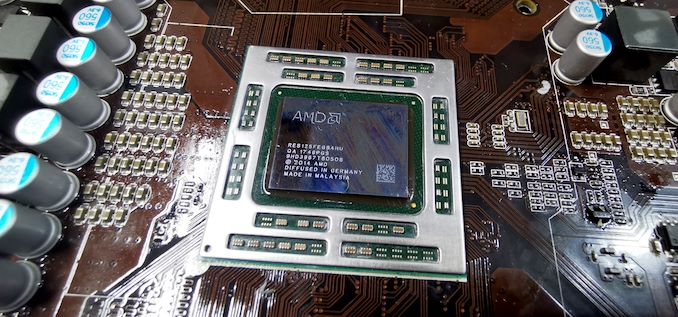
Ever since consoles moved to the same underlying architecture as modern desktop computers, there has always been an underlying question as to whether those same processors could run regular desktop computer versions of Windows, and subsequently be used for more than just gaming. We’ve had to wait a long while, but for whatever reason one of the 8th Generation Console processors is being enabled for the (mass) market, and the first to jump on that game is the Chuwi Aerobox. We can install Windows, and it’s a crazy ride.
Set the Scene: Consoles on x86
The concept of the modern console built on the same x86 architecture as desktop and gaming PCs came into effect with the 8th Generation of consoles – we’re talking the Playstation 4 and the Xbox One, both of which used the semi-custom services of AMD to build specific processors for these machines.
These consoles originally came to market in November 2013, within a week of each other. However, in order to design processors for them, the design had to begin several years earlier, especially when dealing with both the nature of console processor design, as well as the custom additions that both Sony and Microsoft wanted for their specific platform. At the time, Sony wanted more graphics hardware and used GDDR5, while Microsoft opted to enable high-speed eSRAM for its graphics instead.
As the design for these processors would have started in the 2010 timeframe, we are well before any dreams of AMD designing Ryzen. At the time AMD had two CPU core designs that were worth some merit: Bulldozer cores, with its 1 core/2 backend design that has since been branded a large dumpster fire for the company, or Jaguar cores, aimed more for the low power/high efficiency market. Weighing in the performance target of this generation of consoles, both companies decided on having eight Jaguar cores.
Performance Dichotomy: Standardized vs Generalized
One of the key tenets for a console is a fully controlled hardware ecosystem and software stack. Even though the hardware is built as a middle-of-the-road at the time of console launch, the console manufacturer has full control over the software, the virtualization, the drivers, and anything extra special embedded into the silicon. This allows game developers, and specifically game engine developers, to optimize their software platform for a very strict hardware design. It also allows the driver stack to be super thin, reducing latency and increasing throughput.
This is different to the gaming PC market. Because a gaming PC can vary wildly in processor performance, graphics performance, memory performance, storage performance, and even network performance, any performance or fidelity requirements on game developers for the desktop PC market are consistently moving targets. We often find that game developers will define ‘minimum’ and ‘recommended’ specifications to get a desired level of performance with a title.
It is very often clear to see that over the lifetime of a console generation, developers will get more out of the standardized hardware in a console than if it was the same hardware in a generalized platform like a gaming PC. This is why the 8th generation console market was able to use eight efficiency Jaguar cores, rather than going for the higher performance cores on the market.
This means that if we get a console processor and use it in a gaming PC platform, there’s going to be a very distinct performance difference. This is very much worth bearing that in mind as we go through this review.
Enter the Chuwi Aerobox
To be honest, I was surprised when we started hearing about a number of APU listings finding their way onto benchmark websites in early 2019. First of all we saw the A9-9820, then the RX-8150 and the RX-8120 pop-up, with core configurations and graphics counts near to those of the Xbox One variants. There were obvious rumors going around that an Xbox One-like PC design was in the wings, which obviously create a large number of questions as to where the processors were sourced, what the memory configuration would be, and then subsequently if the performance was good or useful. Eventually a few leaked images of a potential motherboard came to market at the time, and it was discovered that the manufacturer Chuwi was behind it.
Chuwi is a system manufacturer from China, and we’ve reviewed a good portion of their hardware. The company jumped onto our radar in 2017, with the 14.1-inch Chuwi Lapbook, a low-end Netbook competitor. The Lapbook 12.3 a few months later attacked a more premium market at an eyewateringly low price, and ever since then Chuwi has been testing the market with some interesting and different designs. For example, Chuwi was one of the only companies to enable Kaby Lake-G in a small form factor PC (Kaby Lake-G was where where Intel paired its Kaby-H 45W processor with a semi-custom AMD GPU in the same package, it was crazy), called the Hi-Game.
Now Chuwi was set to tempt us with this new ‘Aerobox’. To be honest, over time, exact information about the Aerobox was thin, and Chuwi were not making any public announcements. We learned through a number of sources that the Aerobox was eventually going to be targeted at the Japanese market, which in itself is a very unique market for PCs. In Japan there tends to be a skew for very small form factor, esoteric builds, with the focus far more on utility than performance.
We reached out to Chuwi in early 2020 for a sample. Our contacts there explained that the Aerobox was not ready for launch at the time, as it was going through a lot of revisions. We had no reason to not believe the company, however as months rolled on, there was a part of me that has continually wondered if the reason for the long time between leak and launch (as well as limited launch in the JP market) was something to do with restrictions placed on such a console processor being made available for the PC market. Either Microsoft didn’t want it out (or didn’t know about it), or there was something else – perhaps they were waiting for the new consoles to come out.
Up until August, I was emailing once every 4-8 weeks, requesting an update. Because our contact at Chuwi has changed about six times in the last two years, it has been difficult to build rapport with any one individual. This is important because normally a company isn’t too keen on sampling a product outside of its intended sales region, as it would often not be worth the additional sampling overhead. It was that lack of rapport that was perhaps behind the reason why our Chuwi contact outright told us that the company was not intended to sample outside of the JP region. I pleaded the case for AnandTech, our unique style of coverage, and our PR contact did a great job arguing the case internally, and we got the thumbs from the Aerobox product manager. A few weeks later, the Aerobox arrived. (Unfortunately it has been passed down my review schedule a fair bit with recent CPU launches and other coverage needing attention – I have offered my apologies to Chuwi for the delay.)
This is it. The Chuwi Aerobox is a small form factor PC, designed to look like a console. The dimensions are very similar to the older consoles, coming in at 288 x 236 x 50 mm, which is actually slightly smaller than the Xbox One S itself (295 x 229 x 64 mm).
Over the next few pages, we will tear down the unit, and also go through some benchmarking. But first, what APU did we get?
What We Have: The AMD A9-9820
There were three versions of the Xbox One: the original Xbox One in 2013, the updated Xbox One S in 2016, and then a higher performance Xbox One X version in 2017. All three had eight Jaguar cores, but varied in graphics cores, from 768 for the One and One S, up to 2560 in the Xbox One X. The original was built on a 28nm process, with the One S and One X using a superior 16nm FinFET process.
The processor we have in hand today is also eight Jaguar cores, arranged in two quad-core parts. Each part has access to 2 MB of L2 cache, but the only overriding shared level of memory is in the DRAM. For other specifications, this somewhat of an oddball compared to the three processors that were in the Xbox One series. It is almost as if it is a fully enabled version of Xbox One S, with increased frequency and all the graphics available. In this system the processor has the name of A9-9820, and after poking for a few minutes, it does indeed appear to be an overclocked full-fat version of the processor that went into the Xbox One, codenamed ‘Durango+’.
| Xbox One Family APU Comparison | ||||
| AnandTech | Xbox One |
Chuwi Aerobox |
Xbox One S |
Xbox One X |
| Release | Nov 2013 | 2020 | Aug 2016 | Nov 2017 |
| Codename | Durango | Durango+ | Edmonton | Scorpio |
| Manufacturing | 28nm TSMC | TMSC 16FF+ | TSMC 16FF+ | |
| Transistors | 5 B | 7 B | ||
| Die Size | 363 mm2 | ~360mm 2 | 240 mm2 | 360 mm2 |
| CPU Cores | 8 x Jaguar | 8 x Jaguar+ | ||
| CPU Freq | 1750 MHz | 2300 MHz | ||
| GPU SPs | 768 SPs | 2560 SPs | ||
| DRAM | 8 GB DDR3 | 12 GB GDDR5 | ||
| eSRAM | 32 MB | None | 32 MB | None |
| Bandwidth | 68.3 GB/s + 204 GB/s |
14 GB/s (measured) |
68.3 GB/s + 218 GB/s |
326 GB/s |
The Aerobox from Chuwi is using this Durango+ processor. Across the eight Jaguar based cores we see the increased frequency on the CPU cores, from 1750 MHz to 2350 MHz, in every CPU frequency tool we have to hand. It keeps this frequency at any load, for any length of time. By the same token however, we seem to have also lost access to the SRAM, creating a fallback to 8 GB of DDR3 memory only. This will have implications for memory bandwidth.
To be clear, Jaguar cores are AMD’s low powered variant ‘cat’ cores, designed to compete with Atom cores. I’ve noticed online that there is some confusion on this, with some suggesting that these cores (and all Jaguar cores) have a Bulldozer-like design, which is incorrect. Jaguar cores have formed the backbone of AMD’s embedded processor lineup for over a decade, designed for systems with 15-25+ year lifecycles, with the G-series and R-series being the most successful. These are found in any number of embedded systems, such as digital signage, industrial control electronics, and the slot machines in Vegas.
What We Have: AMD RX 350 Graphics…?
This A9-9820 APU inside the Aerobox is listed on the main product page of Chuwi’s website having R7 350 graphics, which would be the equivalent of a discrete desktop graphics card from 2016 with 512 streaming processors running at 800 MHz (with 4500 MHz GDDR5 memory). But the specifications tab for the console lists it as having Radeon RX 350 graphics.
However when the console arrived, on the box it said the system had a ‘Redeon [sic] RX 350 series’. Given the first typo I was sure the second was a typo as well, given that the RX 350 didn’t seem to exist. Our system came with Windows 10 1903 pre-installed, and loading up our GPU recognition tools solved some of our questions, but raised some more.
GPU-Z confirms this is an RX 350, known as Kryptos, but instead of having 512 streaming processors like the R7 350, it has 896 of them. Note that the Xbox One S silicon as sold only has 768. This is because physically the Xbox One (and Xbox One S) actually had 896 streaming processors but a portion was disabled for the console in order to help with silicon yield (the same thing has happened with this newest generation of consoles as well). This goes along the fully enabled theory from the CPU section.
An interesting element is that GPU-Z lists the sub-vendor as MSI, despite there being no mention of MSI anywhere else on the product or through the stack. We reached out to Chuwi, who confirmed that MSI is the ODM for this board, and Chuwi is purchasing/sub-contracting the manufacturing from them. It makes me wonder whether it was Chuwi or MSI who managed to source these processors, either from AMD or elsewhere.
Before touching on the memory, I want to mention the drivers. As mentioned earlier, this system came with a pre-installed Windows 10 v1903, but also with preinstalled drivers. GPU-Z lists these as AMD’s Adrenalin 17.12 beta DCH drivers. We were able to update the OS without any issues, however the drivers seem fixed – trying to update them yielded zero results. AMD’s base software doesn’t recognize this model, not even as an R7 350, and so for games that require a minimum driver version this caused issues. Moreover, speaking to other press that have a different non-Chuwi version (more on that later), they have been essentially trying to find anywhere where there were any drivers that could be installed for these APUs. It appears there are driver packages that work out there, but it’s a crap shoot. Even Chuwi’s own website does not list drivers. Some swift users have found some sources, seemingly from one of MSI’s sub-contractors.
What We Have: Memory Configuration
As for memory, the A9-9820 here uses DDR3. This confirms it as an Xbox One/One S variant, as the Xbox One X uses GDDR5, means we’re not dealing with a cut-down version of that processor. With both the increased CPU core frequency and graphics, no doubt power consumption goes up as well. On the memory, there are four modules of 2 GB DDR3-1333, for 8 GB total, although it appears the system will take a total of 16 GB if needed. The modules used by Chuwi are low profile modules, perhaps for thermals, but the system appears to take taller modules without any issue.
DDR3-1333 nominally creates 10.6 GB/s of bandwidth per channel. In our testing we scored around 14 GB/s, indicating we’re likely dealing with a dual channel configuration. This is far, far lower than the 68 GB/s that the consoles have from memory, or even the 200 GB/s+ that the eSRAM would have provided.
Of the 8 GB of memory in the system, this has to service the CPU and GPU, and Chuwi has set the system to automatically reserve 2 GB for graphics, leaving 6 GB for the operating system and software.
Why Console Processors Have Never Made It To The PC Market Before
The move of the console processors from separate architectures in the 7th Generation to x86 in the 8th Generation was a big win for everyone. By having a common architecture between the two high performance consoles on the market, but also parity with the leading desktop gaming architecture, it meant that developers would have an easier time building a single game that targeted all three platforms.
One might argue that if these game developers have a super standardized hardware target with a console, surely there would be a benefit to end-users if the same hardware was available on the open market. There is a reason why a lot of the tech press have content built around ‘what an equivalent PC would look like’, because the console hardware isn’t made available. Ultimately both Microsoft and Sony want to pull you into their ecosystem with tighter controls, and if they sold the processors on the open market, someone else might offer a cheaper variant of the hardware, albeit on Windows. After piling in those investments with AMD to create semi-custom silicon, but also to enable some form of security by keeping that ecosystem and firmware locked down to the consoles only, both Sony and Microsoft have always wanted to keep a very thick line between the console and the PC.
Over the next few pages, we will go through the Aerobox system, how well it performs, plus some additional commentary on this market.


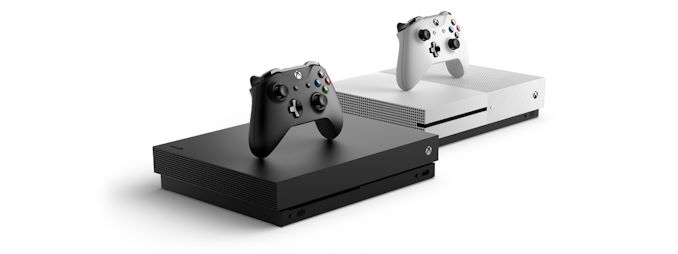
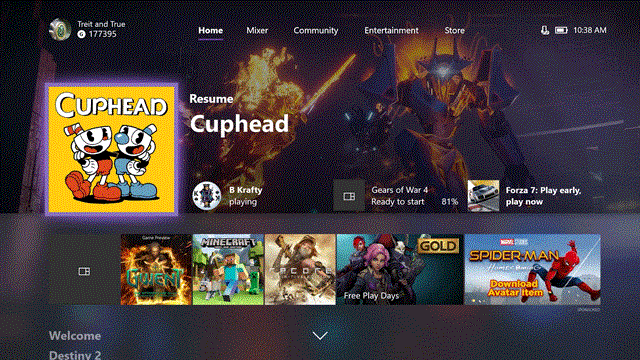

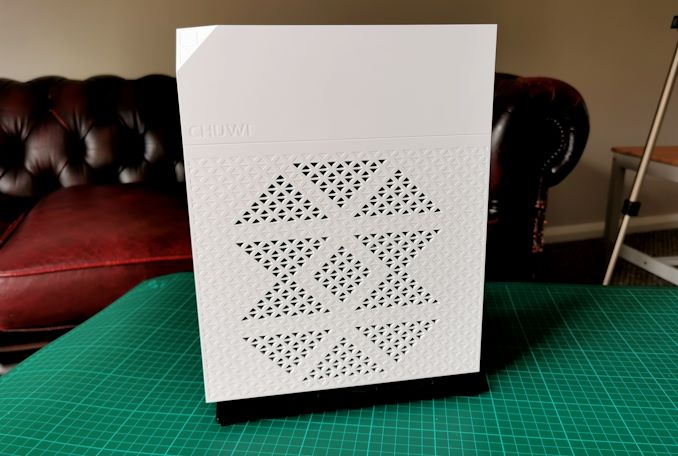
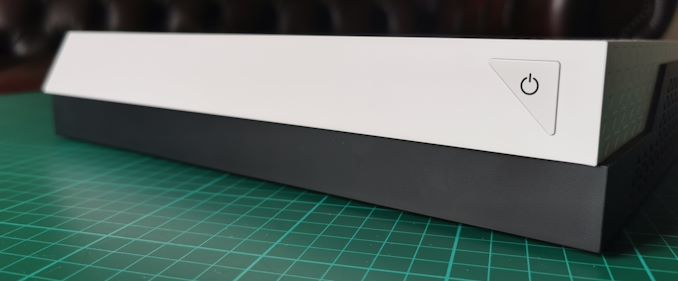
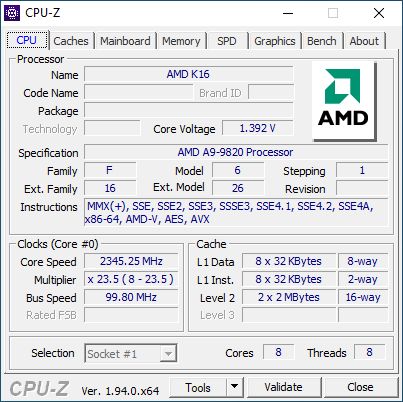
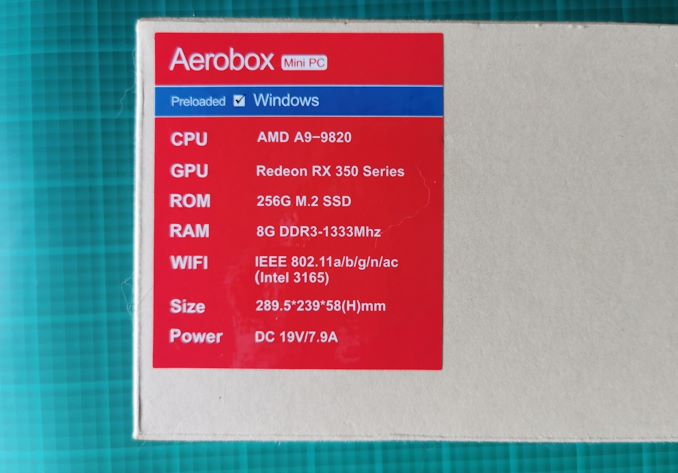










101 Comments
View All Comments
powerarmour - Saturday, December 26, 2020 - link
It's certainly interesting, but it's about 7 years too late performance wise.shabby - Thursday, December 24, 2020 - link
Disappointed you didn't test cyberpunk 2077 on it...YB1064 - Thursday, December 24, 2020 - link
He might have, but it probably crashed.eastcoast_pete - Thursday, December 24, 2020 - link
Had the same thought. Even if it would load, playing at 1-2 fps would be an experience one would want to forget.shabby - Thursday, December 24, 2020 - link
I'm sure at 360p it could pull off a solid 30fps 😂eastcoast_pete - Thursday, December 24, 2020 - link
Good one! Ian, can you comment on whether it would even load Cyberpunk 2077, never mind run it?Ian Cutress - Thursday, December 24, 2020 - link
I don't actually own it. 🤪brucethemoose - Thursday, December 24, 2020 - link
It runs on AMD 17."...our system shipped with beta versions of Adrenaline 17.12, which indicates we have December 2017 drivers. None of AMD’s regular driver packages will recognize this system as it uses a custom embedded processor. Some games will refuse to run because the drivers are so old."
beginner99 - Thursday, December 24, 2020 - link
These Jaguar cores were kind a slow/subpar when the consoles released and now it's just ridiculously bad. Actually amazing what console devs managed to do with these.d0x360 - Thursday, December 24, 2020 - link
True but also remember how tightly optimized you can get with your code when you know the hardware and also when you can code to the hardware without needing to worry so much about abstraction layers, other overhead and DRM that a publisher might slap on after you've already optimized the game.Great example there is ubi soft. If you bought AC Odyssey on steam then there were 4 or 5 layers of drm. You had uplays, steams, denuvo and another denuvo caliber one I can't remember and that might be it but there may be 1 more I can't remember.
Anyways it was the 2 main DRM scheme's (denuvo and the other big one lol) chewing up cpu cycles. I remember playing that game and seeing cpu use average at 70% but then I tried a cracked version (I owned the game) and cpu use dropped to 40% average.
So there are lots of extra things on the pc side that get in the way and that's not even counting problems with the system.